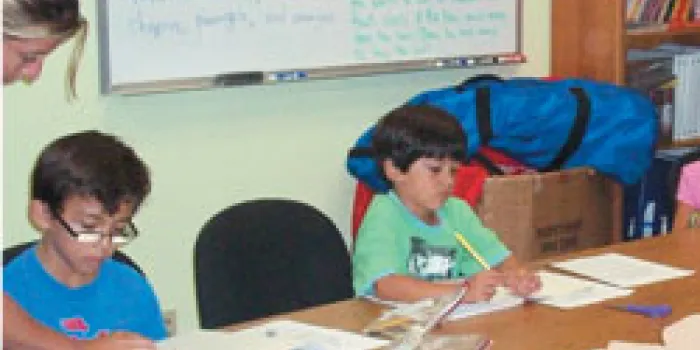In each issue of HemAware, we take a look at how local NHF chapters and associations are making a difference in their communities. This month we talk with Roxana Ramirez, member services coordinator of the Hemophilia Association of San Diego County, about its tutoring program.
Tell us about the tutoring program.
We started the program in fall 2007. Our president, Tony Pascucci, learned that a lot of our kids couldn’t attend summer camp because they had to go to summer school. He had the idea to start a tutoring program. That way, the kids could get their grades up over the year, and then they could attend summer camp.
At the time, I was getting my BA in liberal studies to be an elementary school teacher, so I volunteered to be the tutor for the kids. However, I wasn’t able to go from place to place to tutor everyone. Then our executive director, Theresa Ramirez, looked up some places that offered tutoring services, and we hired credentialed teachers to come into our office every Saturday from 10 a.m. to noon to tutor kids. We’re able to support this program through grants. Right now, we have about 12 kids attending the tutoring program, and it’s open to kids ages 7 to 18. We’re moving to a bigger space just for tutoring, because we’re getting more kids and it’s getting crowded in the office on Saturdays.
What subjects are taught?
The first hour, the kids are tutored in reading and writing. The second hour, the kids are allowed to go over their homework with the tutor. So that can be reading, writing, math—any subject.
How have parents responded?
We’ve gotten very positive responses from the parents that their kids’ grades have gone up. Even the kids come in and tell us, “You know, I actually understand this better now.” It makes a difference to be one-on-one with a tutor rather than in a classroom with 30 students, where every student has a different question about a specific subject, especially in math. Here, the kids have a chance to say, “I don’t understand this; please help me.” Many of the kids miss a lot of school because they’re having bleeds and are unable to catch up. This has really helped out.
What difficulties have you encountered?
About 75% of the kids are Spanish speakers. In California, you are allowed to teach only in English. That law can make it even harder on the teacher—obviously, if a child doesn’t understand something, you have to say it in Spanish, but it’s English-only instruction in California. Both of our tutors are bilingual, and they try to get the kids to learn more English as time goes on.
Is it difficult working with such a wide age range of students?
Right now, we have two tutors. The younger ones go with one tutor and the older ones with the other one. The kids help each other. If one student doesn’t understand something, a tutor will pair him or her with another student. That way kids can help each other out. That’s why we place them in age groups.
What advice do you have for a chapter that wants to start a similar program?
You need complete chapter dedication. You need staff dedication and volunteer dedication. We have to hire the tutors, come in on Saturdays and open the office—once you decide to do this, you have to commit to it. It has to be an ongoing program to really benefit the kids. It takes a lot of dedication, but it’s worth it.

